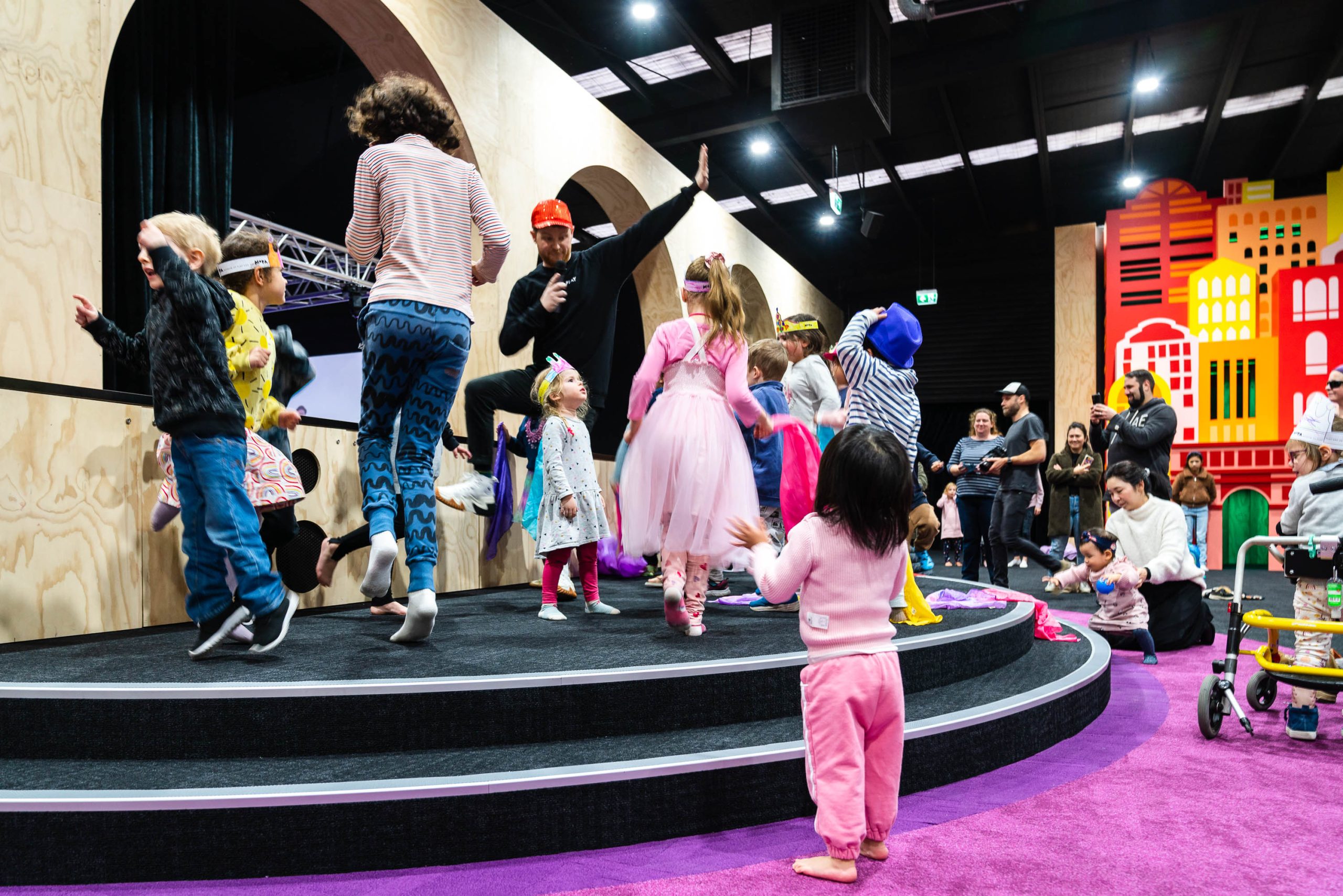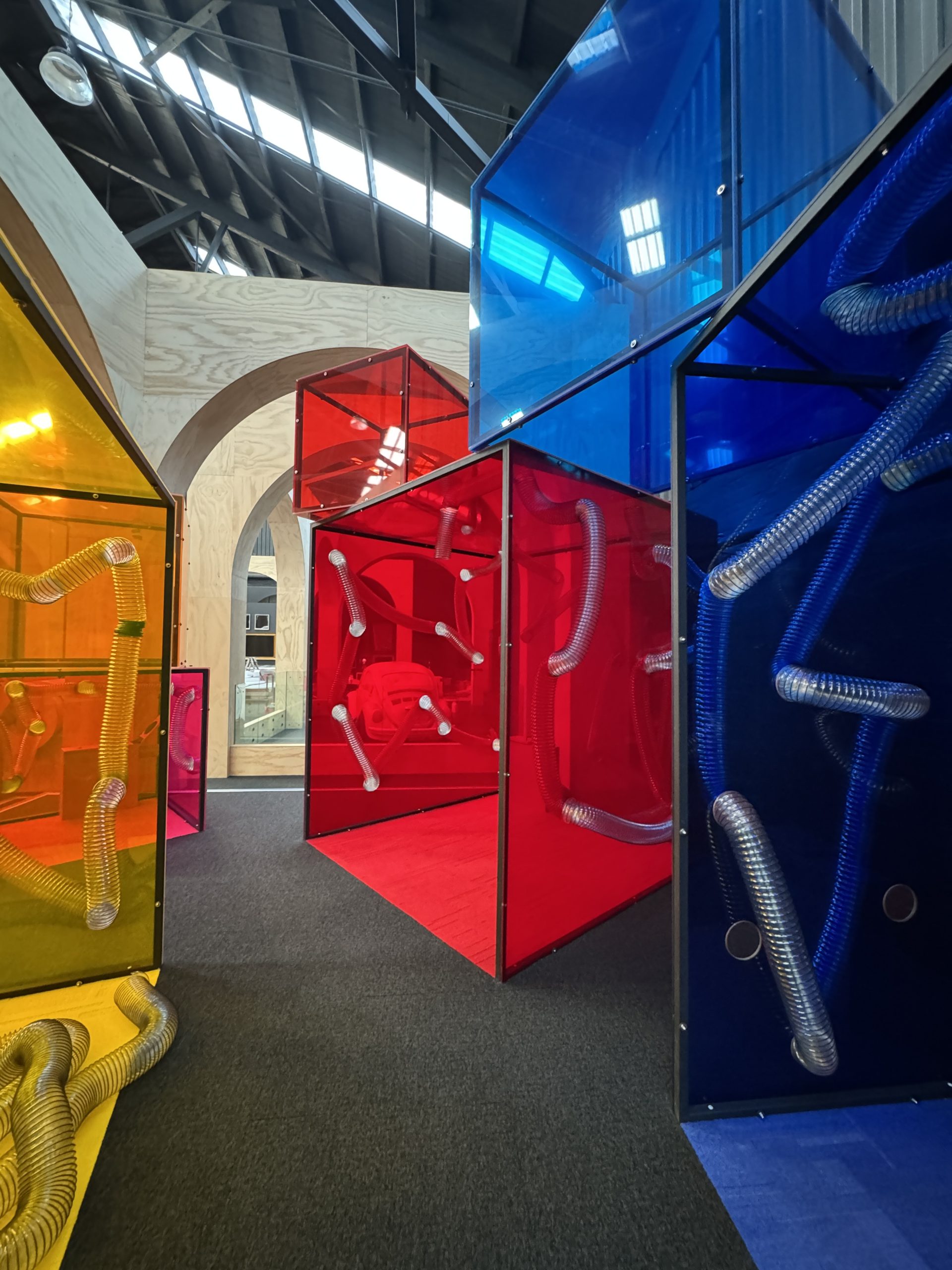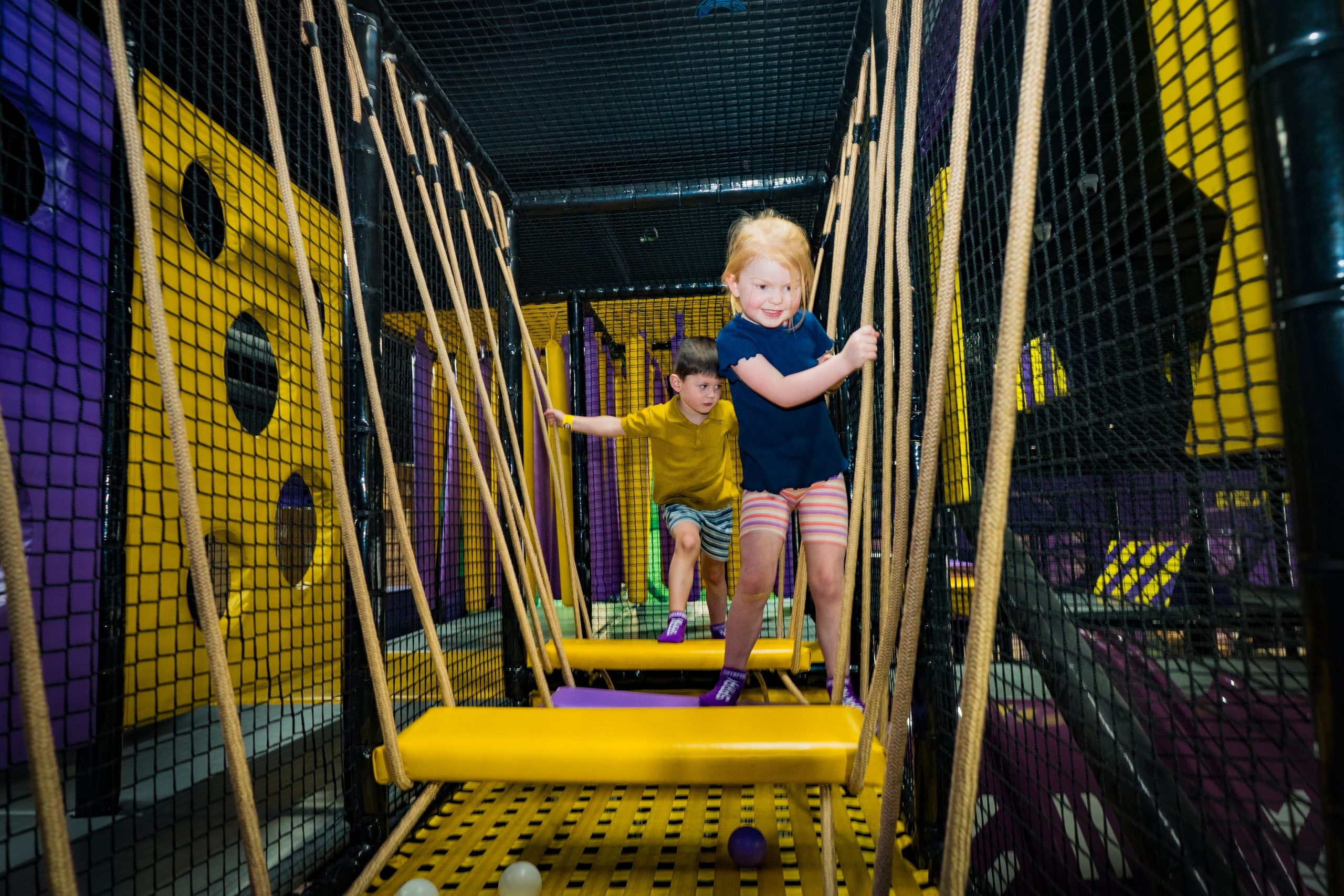Art, education and technology: How kids’ play centres are upping their game

About five years ago, Thomas Mahon and his wife Billy were looking for somewhere their children could enjoy an afternoon of indoor activities. Amidst Melbourne’s abundance of indoor adventure facilities and trampoline parks, the couple recognised a significant absence of play centres that fostered and welcomed creativity.
“When we travelled overseas we discovered lots of children’s museums all around the world, but there were none here in Australia,” Mr Mahon told realcommercial.com.au.
“Sure, in Melbourne there is Scienceworks and the Melbourne Museum, which are great, but nothing specifically for really young kids and nothing with a creative skew. So we decided that was perhaps a gap we could fill.”

Museum of Play and Art (MoPA), Picture: Supplied
In January 2020, Thomas and Billy launched Australia’s first Museum of Play and Art in Geelong – a unique venue centred around play-based education and creative discovery.
Transitioning from their corporate careers, starting a children’s museum represented a significant change for the couple.
“We had no prior experience in construction, much less in designing museum displays. It was an entirely new experience for us,” Mr Mahon remarked.
“We knew the building had to have the soul of a museum, something with a story, which was difficult to find because there is a massive undersupply of venues appropriate for entertainment businesses in Melbourne. Particularly beautiful heritage buildings that feel like a museum could exist within it.”

Museum of Play and Art (MoPA), Picture: Supplied
“Eventually we found this beautiful place built in 1854, one of Geelong’s oldest buildings. As soon as we walked through, we very quickly knew that it was the perfect location for our first museum.”
Two additional MoPA sites have subsequently opened – one in Sandringham (housed within one of Australia’s oldest existing commercial pottery buildings dating back to 1927) and the latest venue in Thomastown, which welcomed visitors earlier this month.

Museum of Play and Art (MoPA), Picture: Supplied
Mr Mahon said making MoPA a reality has been by far the most challenging thing he and everyone involved has ever attempted.
“We did the maths on the Thomastown venue the other day and it’s taken around 100 people to make it happen. Everyone from designers and architects to fire regulators, plumbers, electricians, education specialists, lighting and materials experts, mechanical engineers, stage production experts – the list goes on.”
“We’ve had people visit from all around the world wanting to learn about how we’ve executed these museums, because a lot of what we’ve done has never been done before,” Mr Mahon added.
“Both kids and parents love the museums. The response has been pretty amazing.”

Museum of Play and Art (MoPA), Picture: Supplied
Great expectations
According to Joyce Watts, founder of Victoria’s biggest family travel site, Tot Hot or Not, the days of dumping your kid at the IKEA ball pit while you peruse furniture are long gone.
Ms Watts said parental expectations surrounding kid’s play centres have changed significantly over the past two decades.
“Despite cost-of-living pressures, parents are happy to pay for high-quality indoor play centres that provide fun and educational experiences through safe, engaging environments. This is especially the case in urban areas where outdoor play space may be limited and families live in apartments. Or for instance in Melbourne, where the unpredictable weather can be very hot, cold, wet or windy.”

Museum of Play and Art (MoPA), Picture: Supplied
With the ongoing changes in childhood education methodologies, there has been a noticeable trend towards indoor play centres providing multi-sensory, educational, and themed activities.
“I think these days parents expect more interactive and creative environments to engage their children,” explained Ms Watts.
“STEM-based play zones that combine physical play with creative, sensory experiences catering to a wider range of ages and interests are definitely becoming more popular with families.”
“Inclusive spaces catering to neurodiverse children are also becoming more common, as many traditional indoor play centres can be overwhelming in terms of noise and activity.”
Thomas Mahon remarked on how MoPA’s innovative approach has effectively aligned with these evolving consumer needs.
He stated his museums are as much as educational facilities as they are play centres.
“We’ve adopted what is called the Early Years Learning Framework philosophy, or EYLF for short,” Mr Mahon explained.
“And that philosophy says that we learn so many of life’s lessons through play. We learn how to share, we learn how to role play and express ourselves, we learn what gives us energy and what takes energy away. Our museums are based on these foundational learning principles.”

Museum of Play and Art (MoPA), Picture: Supplied
The application of technology
The increased demand for forward thinking children’s play and activity centres in Australia have attracted international businesses to the region.
Founded in Finland in 2012, SuperPark – an indoor activity venue combining technology with physical movement – opened its first location in Australia at Melbourne’s Highpoint Shopping Centre in 2023.
With Finland regarded as a hub of tech innovation and mobile gaming, SuperPark has incorporated technology into its core approach. But instead of eliminating screens, SuperPark redefines how they fit into children’s lives.

SuperPark. Picture: Supplied
“We essentially utilise technology to enhance movement-based activities and create immersive experiences,” said SuperPark Australia Director, Ben Kirkham.
“Our digital games and activities are designed to encourage movement and keep guests motivated to learn and progress to higher levels – leveraging technology to help kids discover the joy of being active. SuperJump, for example, superimposes your body onto a gaming screen while you jump on a trampoline to complete various challenges.”
Mr Kirkham said the Melbourne iteration of SuperPark has also tailored specific offerings to appeal to the local market.
“We know Melbournians love their footy, so at SuperPark Highpoint we introduced
SuperFooty – an AFL-inspired activity that sees participants test their kicking skills.”
“Other activities such as SuperWhiz and SuperMove are exclusive to the SuperPark brand and can’t be experienced anywhere else in Australia.”

SuperPark. Picture: Supplied
The future of children’s play centres
Experts anticipate significant growth in the indoor entertainment centre industry in the coming years.
A report from Global Children’s Entertainment Centers Market, based in the U.S., predicts that the global market will increase from $32.55 billion this year to $55.49 billion by 2028.
Ben Kirkham said SuperPark has ambitious plans for expansion both in Australia and worldwide, with 15-20 parks currently in development.
“The success of our Melbourne launch has laid a strong foundation and we’re exploring opportunities to open more adventure parks in major Australian cities, driven by strong national demand for family-friendly entertainment and indoor play centres,” Mr Kirkham said.
“Retail landlords are also recognising the significance of their entertainment precincts to customers, which suggests attractions like SuperPark will see heightened demand throughout Australia.”

Museum of Play and Art (MoPA), Picture: Supplied
MoPA is also aiming to capitalise on industry growth, with more museums currently in the works.
“We are set to launch another location in Melbourne’s east – another 2000 square metre space. And we’ve also secured an interstate lease. I can’t say where just yet, but it will be a purpose-built building right in the centre of town,” Thomas Mahon told realcommercial.com.au.
“We’ve got an enormous mailing list of people that keep asking when can we come to their city. When can you come up north, when can you come to Adelaide? The feedback is hugely energising and driving us to open more museums as fast as we can.”







